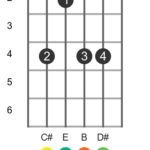Venturing into the realm of high-end acoustic guitars often leads to hushed conversations and wide-eyed admiration for brands like Olson. Recently, a visit to Maple Street Guitars in Atlanta offered a hands-on experience with a used Olson Guitar priced at a staggering $28,000. The opportunity to play such a sought-after instrument was undeniably exciting, prompting a direct comparison to other esteemed brands such as Froggy Bottom, Santa Cruz, and Goodall – guitars already held in high regard.
The initial impression was positive; the Olson guitar sounded beautiful. However, the experience sparked a moment of reflection: was the sound demonstrably superior to warrant such a premium price tag? Compared to previously owned Froggy Bottom, Santa Cruz, or Goodall guitars, the sonic difference, while present, didn’t feel dramatically significant. Playing the Olson was certainly enjoyable, yet it raised questions about the point of diminishing returns in the world of boutique guitars. Further exploration of Bourgeois guitars during the same visit left a slightly underwhelming impression, with a perceived emphasis on midrange frequencies that didn’t quite align with personal tonal preferences. This experience ultimately reinforced a sense of contentment with existing guitar collection, diminishing the urge to chase after more boutique instruments.
Interestingly, a conversation with the manager at Maple Street Guitars revealed a somewhat contrarian perspective. Froggy Bottom guitars, often lauded for their exceptional quality, were described as potentially overrated. Furthermore, a significant number of Olson guitars encountered were deemed sonically unexceptional, with the caveat, of course, being the very Olson available for sale in the store.
This sentiment touches upon a crucial aspect of the high-end guitar market. While personal preference and playing style heavily influence perceived sound quality, the price of a guitar isn’t always directly proportional to its sonic superiority. Olson guitars, in particular, have witnessed substantial price increases, driven in part by the limited production from luthier Jim Olson. Adding to their desirability is the association with renowned musicians like James Taylor, whose use of Olson guitars has undoubtedly elevated the brand’s prestige, perhaps to a greater extent than brands like Froggy Bottom have experienced.
It’s worth noting that owning an Olson SJ built in 1995 provides a valuable point of reference. Having acquired it at a price significantly lower than current market values, the personal experience aligns with the nuanced perspective discussed. Sonically, this Olson SJ stands on par with Santa Cruz guitars and a handmade Gerald Sheppard guitar, exhibiting a slightly mellower character with perhaps a touch more bass. While a Froggy Bottom guitar would be a welcome addition to any collection, the experience underscores that exceptional sound can be found across various high-end brands, and the allure of a particular name doesn’t always translate to a night-and-day difference in sonic quality.
Ultimately, the journey through high-end guitars is deeply personal. While Olson guitars undeniably hold a special place in the acoustic guitar world, experiences like the one at Maple Street Guitars encourage a critical and discerning ear. The pursuit of the “best” sound is subjective, and often, the guitars we already cherish hold their own against even the most revered and expensive instruments.

